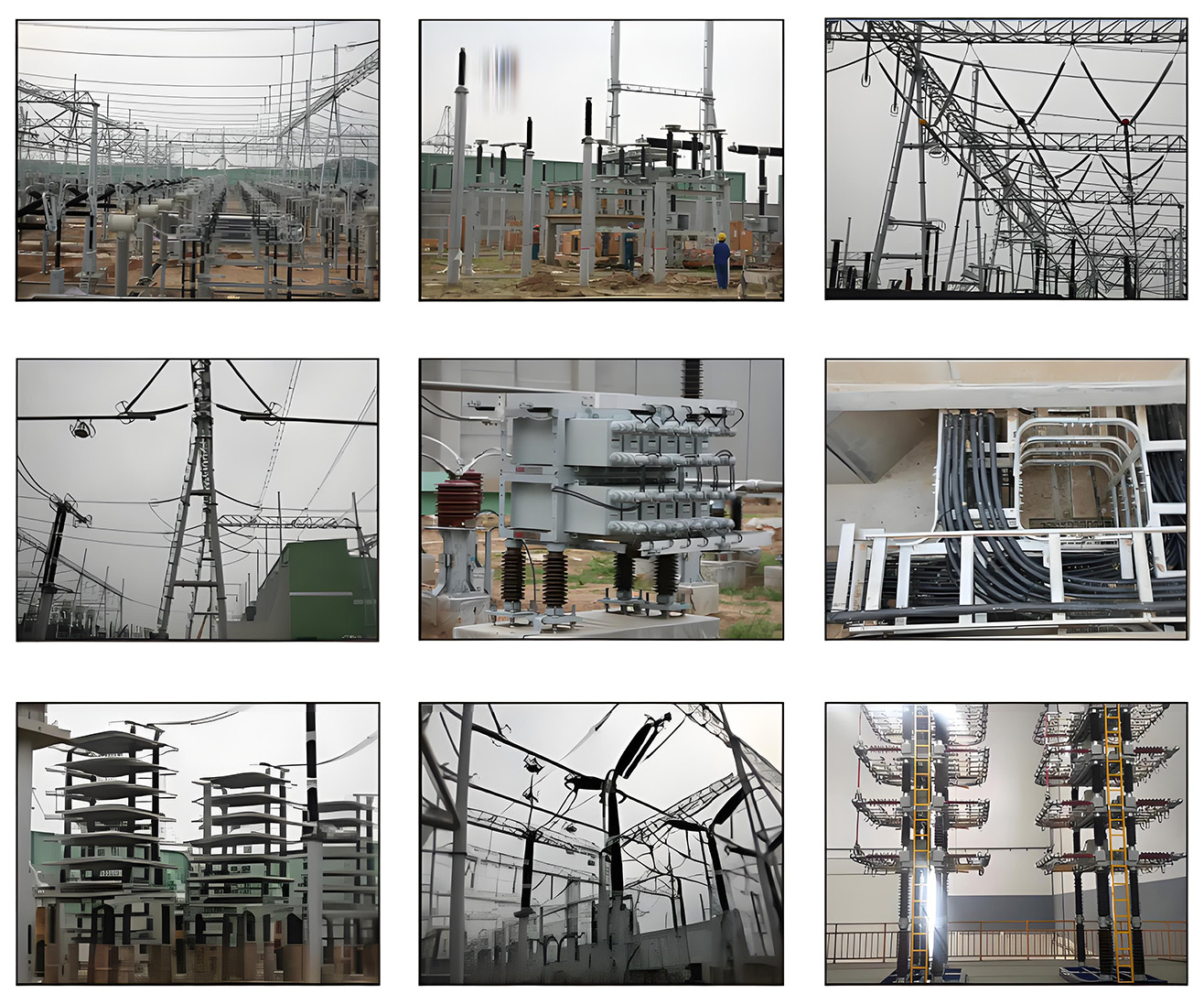
-
CLIENT
Deyang
-
DATE
April 16th ,2025
-
PROJECT TYPE
500KV substation
Deyang 500KV substation
Deyang 500kV Substation is a critical node in Sichuan Province’s power grid, strategically positioned to enhance energy transmission reliability and support the integration of renewable energy from western Sichuan’s hydropower and wind farms. The project aligns with China’s "West-East Power Transmission" strategy, addressing growing electricity demands in the Chengdu-Deyang-Mianyang Economic Belt, a hub for advanced manufacturing and high-tech industries.
Key Technical Components
1. Core Electrical Equipment
3-phase, 1000MVA transformers with on-load tap changers (OLTC), designed for high-efficiency operation (losses ≤ 200kW) and equipped with dissolved gas analysis (DGA) systems for real-time insulation monitoring.
Seismic reinforcement: Base-isolation pads and buckling-restrained braces (BRBs) to withstand seismic activity (intensity 8).
500kV SF6-insulated GIS with integrated circuit breakers, disconnectors, and current transformers. Leakage rate < 0.5% per year, rated for 50kA short-circuit current.
Compact design reduces footprint by 40% compared to AIS (Air-Insulated Switchgear).
(1) 500kV Main Power Transformers:
(2) Gas-Insulated Switchgear (GIS):
2. Smart Grid Integration
Combines BIM modeling with IoT sensors for real-time monitoring of equipment temperature, partial discharge, and mechanical stress. Predictive maintenance algorithms reduce downtime by 30%.
Differential protection relays (SEL-411L) with IEC 61850 communication protocol, ensuring fault clearance within 2 cycles (40ms).
(1) Digital Twin Platform:
(2) Automated Protection Systems:
3. Renewable Energy Integration
±150Mvar STATCOM (Static Synchronous Compensator) to stabilize voltage fluctuations caused by intermittent wind and hydropower inputs.
Pre-configured DC bus for future 20MW/40MWh battery storage integration, enabling peak shaving and black start capabilities.
(1) Dynamic Reactive Compensation:
(2) Energy Storage Interface:
4. Environmental & Safety Features
SF6 gas recycling system (recovery rate > 99%), solar-powered lighting, and rainwater harvesting for fire suppression.
GIS rooms equipped with VESDA smoke detection and nitrogen injection fire suppression systems.
(1) Eco-Friendly Design:
(2) Fire Protection:
Construction Challenges & Innovations
1. Geotechnical Adaptations
(1) Foundation Design: Reinforced concrete piles (depth 25m) to address soft soil conditions in the Chengdu Plain.
(2) Flood Mitigation: Elevated equipment platforms (+2m above historical flood levels) and drainage systems with 500m³/min capacity.
2. High-Precision Installation
(1) GIS Assembly: Cleanroom-grade installation chambers (ISO Class 6) with humidity control (< 15%) to prevent SF6 contamination.
(2) Transformer Transportation: Customized route planning using 3D LiDAR scanning to navigate narrow urban corridors.
3. Grid Stability Enhancements
(1) Harmonic Filtering: 11th and 13th order passive filters reduce THD (Total Harmonic Distortion) to < 1.0% at the Point of Common Coupling (PCC).
(2) Wide-Area Monitoring: PMU (Phasor Measurement Unit) networks synchronized via GPS, enabling sub-millisecond grid anomaly detection.
Implementation Capabilities
1. Technical Expertise
Leveraged experience from Xiluodu Hydropower 500kV Substation and Sichuan-Tibet Grid Interconnection, with expertise in mountainous terrain and complex grid integration.
2. Localized Supply Chain
95% equipment localization (Dongfang Electric transformers, NR Electric protection systems).
Prefabricated substation buildings reduced on-site construction time by 25%.
3. Sustainability Practices
Low-Carbon Construction: Electric construction machinery (excavators, cranes) reduced onsite CO2 emissions by 60%.
Community Engagement: Noise barriers (< 55dB daytime) and greenbelts to minimize impact on adjacent residential areas.
Strategic Value
(1) Grid Reliability: Increases regional N-1 compliance to 99.98%, ensuring uninterrupted power supply for semiconductor fabs (e.g., TSMC Chengdu) and automotive plants.
(2) Renewable Integration: Enables 2GW+ of wind and hydropower integration, cutting annual CO2 emissions by 1.2 million tons.
(3) Economic Catalyst: Supports Deyang’s ambition to become a national advanced manufacturing cluster, attracting investments in robotics and green tech.
